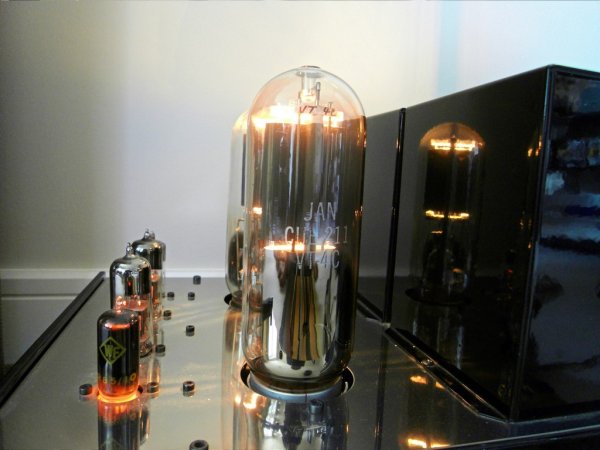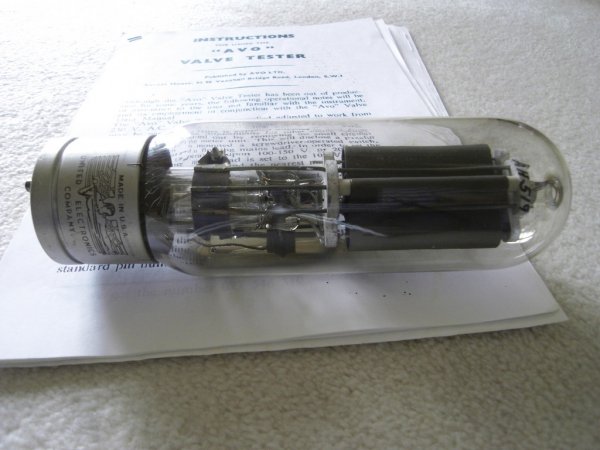A while back someone challenged me on a forum stating he could not see why there would be any difference between various 211s in terms of sound quality. This guy was a noted technical expert.
So I got a test microphone out, and proceeded to take system frequency response plots of the various quads I had. What I found is up to 3Db difference in sections of the frequency response from 20Hz to 20KHz. What's more, the measurements were very definitely repeatable, in the sense that the various quads always displayed the same characteristics when re-measured.
So a sharp, or raised frequency response of one valve at say, 8KHz, may not be heard as a negative in a system that has a frequency response with a corresponding dip at that frequency.
Do the stock Kondo valves have a piece of mica at the top? If so, they are probably the cheapest Shuguangs on the planet. I have seen them being used in Kagura's at various shows, including Munich. Same is true for various Audio Note amps. I guess they are worried about using NOS at shows, as I am sure (know) that the component quality inside these amps is very high.
You just need to find what suits you best, Rudolf. I really would NOT pay much attention to what other people say when it comes to valve rolling. There are just too many variables in a hi-fi system and also in people's ears for it to make sense.
That said, I agreed with nearly all the comments being made during the recent 211 rolling experiment. Scarily so. Which tended to indicate we all heard pretty much the same thing. That is pretty freaky, really.
The glass support at the top of the UE is to reduce internal resonance/microphony. It is probably a good thing in terms of accuracy, but some people seem to like microphonic valves as they can give a more analogue feel i.e. a bit like the feedback a turntable cartridge picks up at higher SPLs. It leads to a sense of better space and air, when in fact the result is not technically as good.
Hi-fi is mad. But it is fun



















